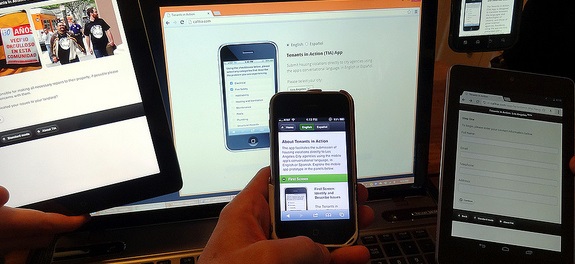How to build an app which is used globally
While building an app, you can configure it for a global audience, so you can have a bigger market, with nothing standing in its way. There would be no language barriers, no boundaries and no localisation. But how do you increase the potential market for your app so it reaches people easily, breaking barriers and being easily adaptable?
Every company has a reason for developing an app. Usually building an app is done for a particular goal, right? Identify that goal, and then it will be easier to build a successful one, and even have a global launch. Just because you are located in a particular country doesn’t mean that you have to focus on selling in that country alone, you can always expand.
Yes, English is an option, but if your app reaches a country where the people don’t speak English or is not comfortable with the language, and would still like to make use of your services, how do you meet their demands? So don’t hesitate to build a multilingual app that can be used by various people across the world.
In 2017, the number of shipped smartphones, both Android and iOS reached a massive number of 397.97 million. Out of this Android had a share of 32.16 million, iOS with 51.99 million, and other OS platforms with 0.82 million.
Games were the most revenue grossing apps out of these, followed by business apps, tools and so on. Ten years ago when apps were first introduced in the market, who knew they would gain such massive popularity. They have blended so seamlessly in our lives that life without apps is virtually unimaginable.
When you have such a big market open before you, here’s what you can do to build an app that could be accessed by anyone anywhere.
1. Which countries to target
China is quickly becoming the world’s fastest growing mobile app market. And when compared to consumers in the US and UK, the consumers in China use more apps on an average every month. According to reports and App Annie, the average Chinese consumer uses about 40 apps per month, while a US customer uses only 35.
However, if you are planning to target Chinese language to sell your app in China, make sure you sell it through an app store that’s registered with the government. The rule had been enforced since January 16th , 2017, and you will have to take special care to ensure the user rights and security, or the App Store will have to take the brunt of the fall, and you close the door to further expansion in the country.
2. Start small, aim for big later
Going international is no small task. It would be better to start small, instead of committing all your resources to the international market. Kick off at the basic level and then move forward capturing market after market.
3. Optimize your app title
You know you could have takers in Japan, but are you sure it will reach them? Suppose the people in Japan do not get your app after searching for it in the search engines, what would you do? So make sure you have a good app title, market description, search keywords based on the language preferences, cultural nuances and so on. You will have to make tailor-made local efforts and campaigns to make your app specific to that particular place. You might even have to add in certain features, and remove some others in order to make it palatable.
4. Note the culture differences
You will have to study the culture differences of the place you are targeting, so that means going the extra mile to get into the psychology of the people, learn their lifestyle and habits, know what kinds of events they like and attend, what activities they indulge in during the weekends and so on. Because, what’s hot in China, may not be popular in Japan or US and vice versa.
Similarly what’s humorous in England, may sound insulting to an American. For example, for Americans and the Brits, the concept of teasing each other is so different from each other. And they behave differently towards the people they like and they don’t. In this manner, you have to take into account a number of factors, especially when it comes to caste, colour and gender before you communicate with them.
5. You can even build a team there
You have built an app, you have followed the cultural and language nuances, you have followed the SEO strategies and have marketed the app well. Now leave it to your target audience to love your app. Once you’ve tasted the scent of success, you can build a team in the country. It is a huge commitment, and needs a lot of knowledge and of course, vital resources. It is not easy to get it right, but when you do, you become international.
6. Understand what people need
Once you learn about a country and its culture, it is imperative to understand what the people need. If your app idea matches their requirements, then it would help you list of the features needed for the app. In certain cases, you might have to add certain features, and sometimes delete certain others.
7. Deciding on the app features
Your experienced developer would be greatly helpful in coming up with an incredible app design with only the important features. The app design is very important because you have to get all the details within it, and still convey the core idea.
Design your app to support the layouts and fonts of various languages. You will have to appropriately format the dates, phone numbers, time and currencies so you can adapt them for various countries.
8. What kind of an app – iOS, Android or both?
Consider your market’s demographics and this would help you decide whether to go for iOS apps or Android apps. As both needs completely different programming language, most companies prefer to go for one of the platforms to save money. App Store is the most popular one among developers because developers find the sign up, download process in the Play Store a bit complicated.
Follow these tips, and you can easily build an app that will be used on a global level.
Interesting Articles:
Steps to launch an app into the market
Successful app launch in different steps
Picture source: Flickr.com/ Craig/ Levent-Levi



